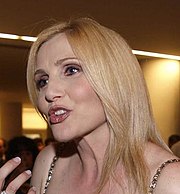Design
Design
Personality
Chart Properties
Your Cross represents the specific theme of your life. This cross embodies your unique potential & the lessons you're here to learn, providing a roadmap to fulfilling your life purpose.
We use the UTC birth time and date to do the calculations required to generate your Human Design chart.
Buy Tokens
Pay as you use, no expiry and no subscription required.Prompt Ideas
Get inspired with some epic prompt ideas.Louis Pasteur's Biography
French scientist, biochemist and bacteriologist, considered the founder of preventative medicine. He is best known for the origination of pasteurization, a process by which harmful bacteria in perishable food products are destroyed using heat, and his contributions are some of the most valuable in the history of science and industry.
Descended from generations of tanners, as a child, Pasteur’s main interest was drawing and he often did pastel portraits of his parents and friends. He attended primary and secondary school first in Arbois, and later in Besancon. He earned his bachelor of arts at the Royal College in Besancon in 1840, and followed this by achieving his bachelor of science in 1842. The following year, he entered the famous teachers’ college, École Normale Supérieure, in Paris, and received his master of science in 1845. After receiving an advanced degree in physical sciences, he got his doctor of philosophy in 1847.
On 22 May 1848, he presented a paper to the Paris Academy of Sciences; the discovery of which he spoke involved molecular asymmetry and formed the foundation for much of his later research. That same year, he became a professor of physics at the Dijon Lycée, but moved on to become a professor of chemistry at the University of Strasbourg. In 1854, he became dean of the science faculty of University of Lille where he put in place an exceedingly modern education concept by offering evening classes for the workmen of the city. It was here that he began his studies on the process of fermentation, an in 1857, he was named Director of Scientific Studies at École Normale Supérieure where he continued his research.
Pasteur was elected to the Academy of Sciences in 1862, and the following year, École des Beaux-Arts put him in charge of a new program of instruction in geology, physics and chemistry applied to the fine arts. His duties eventually interfered with his first love, that of research, and he resigned his post in 1867. Through the auspices of Emperor Napoleon III, a laboratory was created for him at the same institution, and he again immersed himself in his work.
In 1865, with the silkworm industry near collapse, he relocated to the south of France, where just three years later, he identified two separate diseases as well as a method to prevent the contagion from spreading. In 1870, he devised a procedure to prevent beer from deteriorating with time. The French Parliament, grateful for his work on problems that were directly related to the country’s economy, gave him a grant that ensured his material security, and in the early 1880s, he perfected a technique to vaccinate sheep against anthrax. He was elected a member of the Académie Française on 27 April 1882, and began his search for a treatment for rabies. On 6 July 1885, he applied a weakened form of the virus to save the life of a young boy who had been bitten by a rabid dog; the experiment was successful, and in 1888, he opened the Pasteur Institute of Paris, for the purpose of specializing in rabies research, prevention and treatment.
Always curious, he was endowed with a remarkable ability of observation. In his experiments, he applied himself in a skillful and immensely enthusiastic manner, and his work brought about a revolution in the 19th century scientific methods. Pasteur was a firm believer in the freedom of creative imagination combined with rigorous experimentation, and he defended his ideas courageously, often harshly condemning those who opposed him. As well, he was aware of his value to the world and was quick to accept honors.
Pasteur married Marie Laurent, the daughter of the rector at the University of Strasbourg, on 29 May 1849. They had five children, but only two survived childhood.
In 1868, Pasteur was partially paralyzed, and although he continued his research, he retired from the University. He headed the Pasteur Institute until his death at 4:40pm on 28 September 1895 in the Western suburbs of Paris. The Pasteur Institute is still one of the world’s leading research centers, and his disciples, the Pasteurians, continue his work worldwide.
Link to Wikipedia biography
Your Cross represents the specific theme of your life. This cross embodies your unique potential & the lessons you're here to learn, providing a roadmap to fulfilling your life purpose.
We use the UTC birth time and date to do the calculations required to generate your Human Design chart.
Prompt Ideas
Get inspired with some epic prompt ideas.

Kurt Browning
5/1 Emotional - Solar Plexus ManifestorJacques-Henri Treich
6/2 Emotional - Solar Plexus Manifesting Generator

Jules Émile Planchon
3/5 Self Projected ProjectorE.E. “Doc” Smith
5/1 Sacral Manifesting Generator





